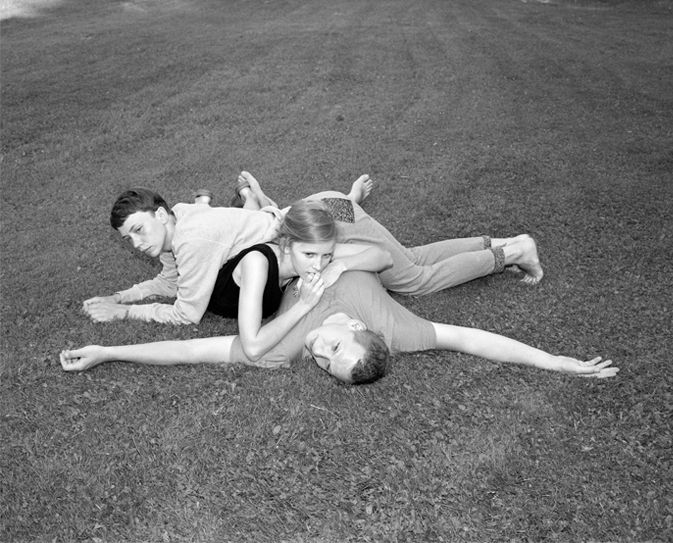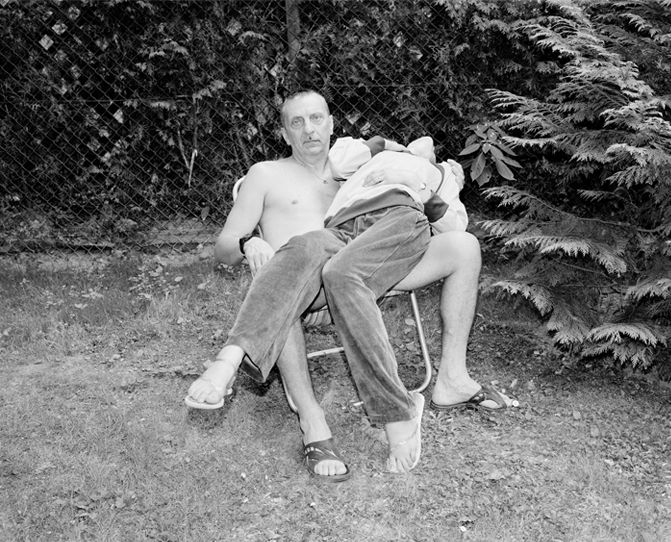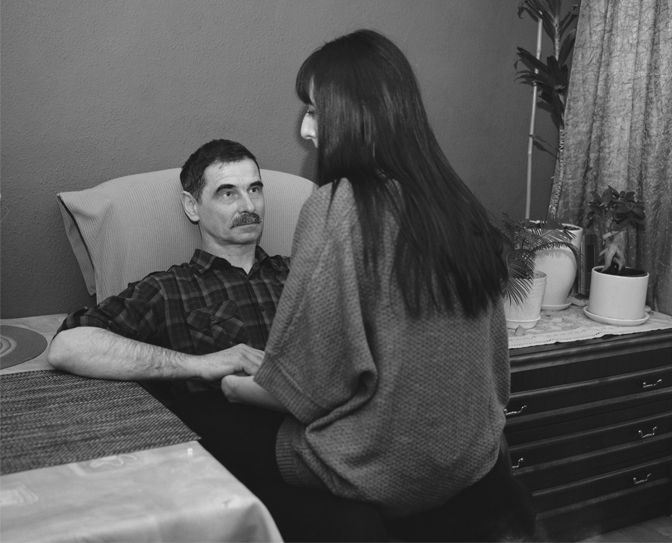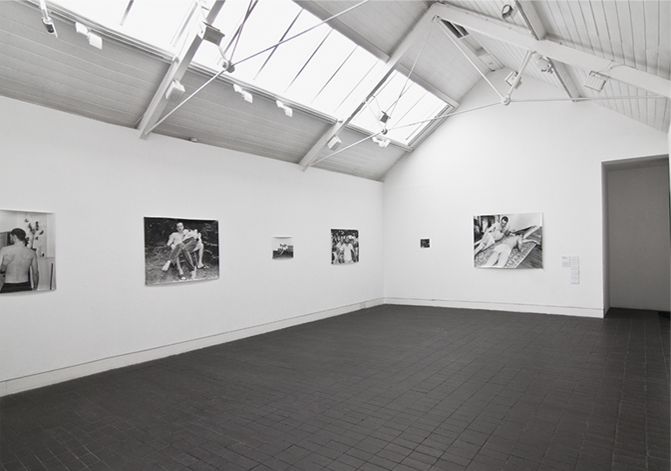Recently we visited Joanna Piotrowska’s exhibition „How are you” in księgarnia | wystawa. The exhibition surprised us. Piotrowska touches the issue relation between women and men – of domination and objectification of men. The photo shoot was made in Nairobi in cooperation with Fundacja Razem Pomoja. The sophisticated in their simplicity colour images are very intimate.

Joanna Piotrowska, How are you?, 2015

Joanna Piotrowska, How are you?, 2015
In contrast FROWST’ photographs are black and white. But the relationships between people were also shown in FROWST. This photographic series shows family members and how they are expressed through body language.

Joanna Piotrowska, FROWST, silver gelatin hand print
Year ego Calvert22 Gallery organised an event, where they invited along the artist Joanna Piotrowska for a “studio visit”. During this meeting the artist introduced her photographic projects: FROWST and 5128. FROWST photobook has won the First Book Award competition and was published by the prestigious British publishing house MACK Books.
Piotrowska explained the ideas, meanings and process involved in creating each photographic project, as well as the historical background.
Bert Hellinger’s book was the main source of inspiration for the series. The book features gestures and poses relating to his Family Constellations, as well as family photography, where posing habits featured heavily. Piotrowska begins her process by collecting the memories of family members and their photos. However she also produces documentary films capturing how these bodies respond to each other when performing.
Her photographic series focuses on depicting the relationship between family members, reconstructing their memories and their history. The artist was able to achieve this through working intimately with real families in their own domestic environments.
Through choreography, gestures, body movements, facial expressions, and gazes the artist reveals the tension, hidden emotions, and inner conflicts plaguing her subjects. Here the title of the series is meaningful and apt, referring to the atmosphere and ambience present during the creation process, where all sorts of feelings between family members are exposed and brought to light.
The series FROWST is entirely in black and white, as the artist wished not to use color in order to avoid any distraction. This absence of color highlights the pure form of the photographed subjects, enabling the viewer to focus their attention on the body language of the subjects instead.

Joanna Piotrowska, FROWST, silver gelatin hand print

Joanna Piotrowska, FROWST, silver gelatin hand print

Joanna Piotrowska, FROWST, silver gelatin hand print
The second project presented at Calvert22 was 5128, a series of photographs taken when Piotrowska was travelling to Bieszczady, in the South-East of Poland.
This series of photographs was prompted by the artists’ own experience. Her great-grandparents house in the region was destroyed, with the only trace of its presence left being a wild garden, which had expanded to take over the entire site. This ‘family’ experience led Piotrowska to take a closer look at the history of this region, in particular the ‘Vistula’ location, which involved the resettlement of post-war Poland’s Ukrainian minority in 1947, as well as the ‘Volyn tragedy’, the ethnic cleansing operation that took place in 1943-44.
Here, once again the artist confronts the issues of history and memories. Piotrowska travelled with an old map, which allowed her to discover many former villages in Bieszczady, and photograph these abandoned settlements.
What is striking in all these photographs is the presence of wild orchards on the sites of the former villages, like relics of the past.
The series presents 12 images with each photo named after a particular village. The title of the series 5128 suggests the number of the houses which existed in this region in the past.
The blossoming fruit trees in the orchards clearly stand out against the typical forest landscape. Their white and pink flowers blend into the pine needles and dry branches of the other trees.
In these photographs the artist has clearly highlighted two opposites: the blossom, which is seen as the beginning of life, and history, which deals with the drama of the lives of these families and their subsequent deaths. These starkly romantic images clash alongside the tragic history burdening the inhabitants of this region.
Knowing even a small part of the history of this region in Poland, which is mainly marked by the suffering of many people, looking at these photos emphasises the feelings brought about by these two extreme emotions.
Written by Kornelia Pawlukowska
Edited by Dobromila Blaszczyk and Maggie Kuzan
Joanna Piotrowska was born in 1985 in Warsaw, Poland. She received her B.A in Fine Art at the Academy of Fine Art in Cracow in 2009 and a diploma in Photography in Warsaw Film School in 2010. Selected exhibitions include: individual exhibition in Zpafiska Gallery in Cracow, Poland, photography group exhibition in Palais des Festivals et des Congrès in Cannes, France and group exhibition at Goethe-Institut in Riga, Latvia. Prizes and scholarships include: Former West Learning Place in Haus der Kulturen der Welt in Berlin, Leica European Schools Photography Award, Genesis Foundation Scholarship, Nomination for sittcomm.award 2010, Nomination for Terry O’Neill Award 2010, Creative Scholarship of the Head of the City of Cracow, Sony World Photography Award – Europe Winner 2010 and Hidden Places – artist in residence in Görlitz, Germany.
Recently completed her MA at Royal College of Art, London. She has exhibited her work internationally in Ireland, Spain, Poland, Russia, France, Latvia and in the UK. Works from FROWST have been included in Bloomberg New Contemporaries 2013, and in the exhibition ‘Jerwood Encounters: Family Politics’, curated by Photoworks.

Joanna Piotrowska, FROWST, silver gelatin hand print

Joanna Piotrowska, FROWST, silver gelatin hand print

Joanna Piotrowska, FROWST, silver gelatin hand print

Bloomberg New Contemporaries 2013

Jerwood Encounters: Family Politics’, London 2013










